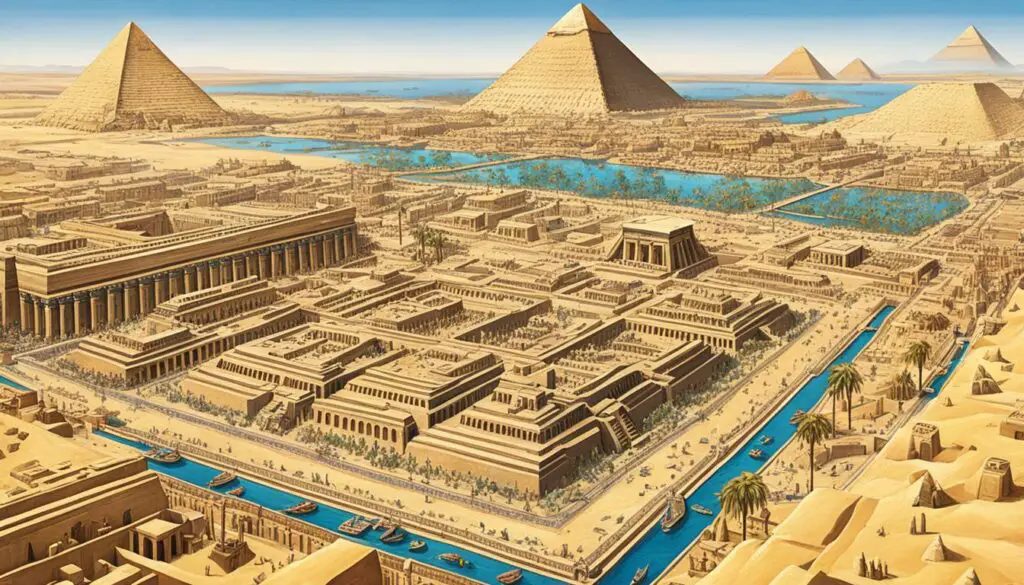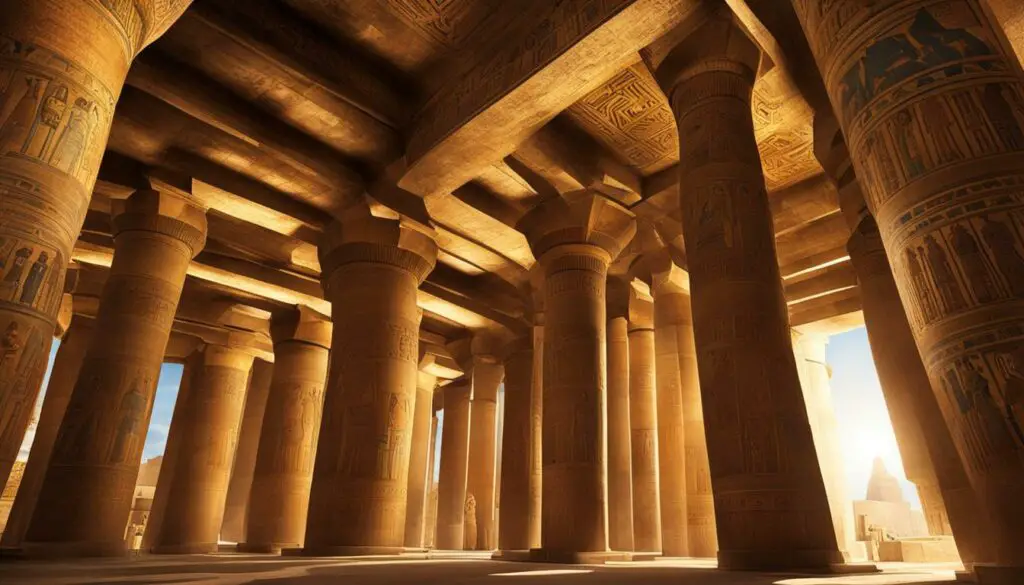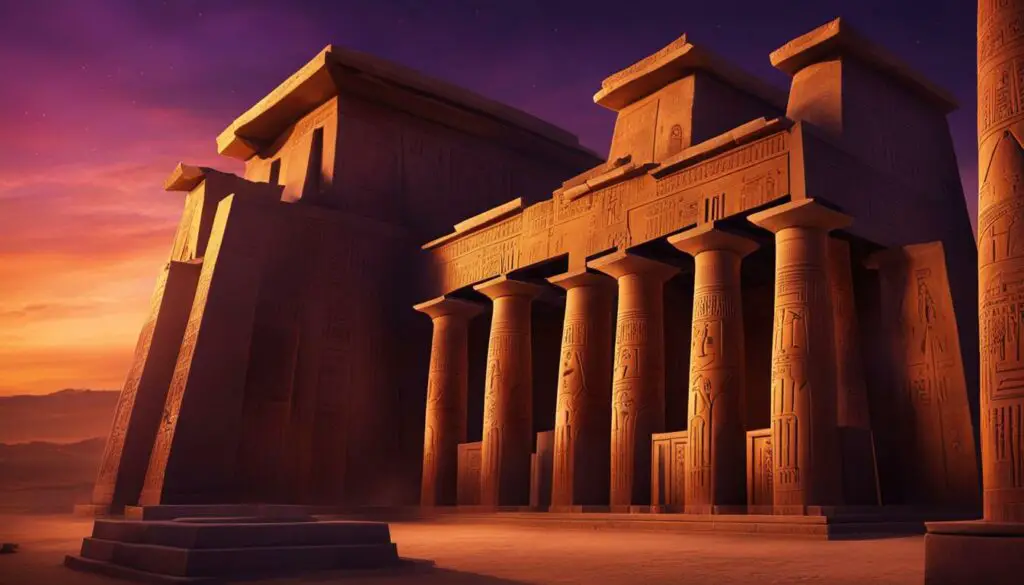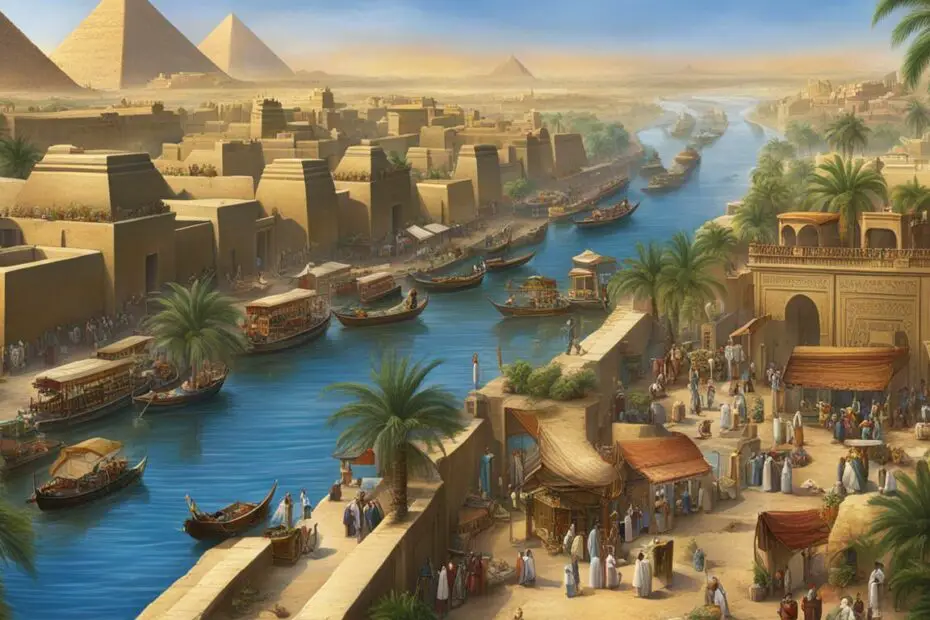When you think of ancient Egypt, what comes to mind? Pyramids, pharaohs, and temples may dominate your mental image. But what if I told you that there is more to ancient Egypt than these iconic structures? What if there were thriving cities, bustling with life and activity?
Recent excavations and research have challenged the long-standing belief that ancient Egypt was primarily a civilization without cities. In fact, evidence has emerged revealing the existence of ancient Egyptian cities and their crucial role in the development of the civilization.
The Rediscovery of Ancient Settlements
The recent discovery of the “Rise of Aten,” a well-preserved ancient settlement on Luxor’s West Bank, has captured global attention. This archaeological site, dating back to the reign of King Amenhotep III, offers valuable insights into everyday life in ancient Egypt, providing a glimpse into administration, housing, food production, and workshops.

Excavations at the “Rise of Aten” have uncovered a treasure trove of artifacts, including vessels with ink inscriptions, jewelry, and tools, shedding light on the craftsmanship and industries of the ancient Egyptians. These discoveries present a more complete picture of urban life, showcasing the activities and occupations of ordinary people, in contrast to the stone-built monumental structures that often dominate discussions about ancient Egypt.
The exploration of other archaeological sites in ancient Egypt, such as Abydos, Tell el-Amarna, and Deir el-Medina, has also contributed to our understanding of ancient Egyptian life. These sites have revealed evidence about ancient Egyptian housing, work, diet, technology, religious activities, and more, allowing researchers to gain a nuanced understanding of the ancient Egyptian civilization and the lives of its people.
The Urban Centers of Memphis
Memphis, founded by King Menes, was the oldest capital of ancient Egypt and served as an administrative capital while Thebes was the religious center. Located between Upper Egypt and Lower Egypt on the Nile, Memphis controlled the travel between the two regions and played a crucial role in ancient Egyptian civilization. At its largest, Memphis covered 20 square miles and had a population of around 250,000, making it one of the largest cities of its time.
Today, most of Memphis lies beneath the modern village of Mit Rahina and surrounding fields, with only a few remnants of its grand buildings remaining. The Memphis Museum houses artifacts such as the reclining Colossus of Ramses the Great and the Alabaster Sphinx of King Tuthmosis III, providing insights into the city’s rich history.
Memphis at a Glance:
| Founded by | King Menes |
|---|---|
| Capital status | Administrative capital |
| Location | Between Upper Egypt and Lower Egypt on the Nile |
| Size | 20 square miles |
| Population | Around 250,000 |

Exploring Thebes (Luxor)
Thebes, now known as Luxor, was one of the most prominent ancient Egyptian cities, boasting a wealth of historical and cultural treasures. This mesmerizing city was home to the greatest concentration of ancient monuments in Egypt, offering a captivating glimpse into the grandeur of ancient Egypt.
The temples of Thebes, including the renowned Karnak and Luxor Temples, stand as majestic reminders of the civilization’s devotion to religion and its pharaohs. These colossal structures showcase the exquisite architecture and intricate carvings that epitomize ancient Egyptian artistry.

Thebes also encompasses the Valley of the Kings, a burial site for numerous pharaohs, including the famous tomb of Tutankhamen. The Valley of the Queens, where royal consorts and princesses were laid to rest, adds another layer of intrigue to the city’s rich history.
In Luxor, visitors have the opportunity to immerse themselves in the awe-inspiring world of ancient Egypt. The city remains a popular destination for both tourists and archaeologists, providing a unique chance to explore the ancient urban centers and delve into the mysteries of this ancient civilization.
Highlights of Thebes:
- Karnak Temple Complex: An expansive complex of temples and shrines dedicated to the Theban triad of Amun, Mut, and Khonsu.
- Luxor Temple: A stunning temple complex featuring colossal statues, majestic columns, and intricate hieroglyphics.
- Hatshepsut Temple: The mortuary temple of Queen Hatshepsut, known for its grand architecture and picturesque location.
- Valley of the Kings: A burial site for pharaohs, boasting elaborately decorated tombs that reveal ancient Egyptian beliefs about the afterlife.
- Valley of the Queens: The final resting place of royal consorts and princesses, showcasing beautifully preserved tombs.
- Tutankhamen’s Tomb: The exceptionally preserved burial chamber of the boy pharaoh Tutankhamen, filled with invaluable treasures.
By exploring the various sites in Thebes, visitors can gain a comprehensive understanding of ancient Egyptian culture, architecture, and religious practices. Luxor’s archaeological wonders continue to captivate and inspire, offering a remarkable journey into the heart of ancient Egypt.
Abydos and the New Kingdom
Abydos, one of the oldest cities in ancient Egypt, played a significant role during the New Kingdom, particularly under the reign of Ahmose. This city experienced periods of decline and revival, leaving behind a rich historical legacy.
The area surrounding Abydos boasts several notable archaeological treasures. One of these is the last royal pyramid constructed by Ahmose, marking the end of the pyramid-building era in ancient Egypt. This pyramid is a testament to the power and stature of the pharaohs during the New Kingdom.
Another remarkable artifact found in Abydos is the Tablet of Abydos. This ancient stone tablet lists the names of Egyptian kings from Menes, the legendary first pharaoh, to Seti I. It provides valuable insights into the lineage and succession of pharaohs in ancient Egypt, offering a glimpse into the dynastic history of the region.
The Temple of Seti I is another highlight of Abydos. Known for its intricate bas-reliefs and vibrant murals, this temple provides a wealth of information about the religious practices and deities worshipped by the ancient Egyptians. The detailed artwork offers a window into their cosmology and beliefs, allowing us to explore the spiritual world of ancient Egypt.
Abydos serves as a crucial archaeological site for understanding the pharaohs and their reigns, as well as the religious beliefs of the ancient Egyptians. The remains unearthed in Abydos contribute significantly to our knowledge of ancient Egyptian history, shedding light on the lives of both the ruling elite and the common people.
Intricate Bas-Reliefs and Murals at the Temple of Seti I

Urban Life in Ancient Egypt
Recent excavations and research have revealed a vibrant urban life in ancient Egypt, dispelling the notion that it was primarily a civilization without cities. The discovery of administrative buildings, silos, and settlements has provided unprecedented insights into the daily activities, occupations, and social organization of ancient Egyptian society.
Ancient Egyptian cities were strategically located along the fertile Nile River and played vital roles in agriculture, trade, and transportation. These urban centers buzzed with a variety of activities, such as private trade, bustling local markets, beer brewing, and vibrant religious festivals. Entertainment was also an important part of urban life, with storytelling and performances taking place in communal spaces.
The study of ancient Egyptian cities goes beyond the elite perspective and delves into the lives of ordinary Egyptians. It reveals the rich tapestry of their culture, showcasing their traditions, customs, and social interactions. Exploring the urban lifestyle of ancient Egypt provides us with a more comprehensive understanding of this fascinating civilization.
FAQ
Q: How has recent archaeological work shed light on the development of cities in ancient Egypt?
A: Recent excavations, such as the University of Chicago expedition at Tell Edfu, have uncovered important information about urban life in ancient Egypt. The discovery of a large administration building and silos at Tell Edfu has provided new insights into the organization and economic prosperity of ancient Egyptian communities.
Q: What was the significance of the silos found at Tell Edfu?
A: The silos discovered at Tell Edfu were the largest grain bins found in ancient Egypt. They served not only as a bank for storing grain but also as a vital source of food for the community. This suggests that Tell Edfu was a prosperous and economically important city in ancient Egypt.
Q: What does the discovery of well-preserved ancient settlements, such as the "Rise of Aten," tell us about urban life in ancient Egypt?
A: Recent discoveries, including the “Rise of Aten” settlement on Luxor’s West Bank, have provided valuable insights into everyday life in ancient Egypt. These settlements offer a more complete picture of urban life, showcasing aspects such as administration, housing, food production, and workshops, giving us a glimpse into the daily activities and occupations of ordinary people.
Q: What can we learn from the vessels with ink inscriptions, jewelry, and tools found in ancient Egyptian settlements?
A: The discovery of artifacts such as vessels with ink inscriptions, jewelry, and tools gives us valuable information about the craftsmanship and industries of ancient Egypt. These findings shed light on the skills and trades of the ancient Egyptians and provide insight into their cultural practices and economic activities.
Q: How do ancient settlements contribute to our understanding of ancient Egyptian life?
A: Unlike the monumental stone-built structures, ancient settlements provide a more comprehensive view of urban life in ancient Egypt. They offer insights into various aspects of society, including housing, work, diet, technology, and religious activity. By excavating and studying sites like Abydos, Tell el-Amarna, and Deir el-Medina, researchers have gained a nuanced understanding of the daily lives and cultural practices of the ancient Egyptians.
Q: What were the roles of Memphis and Thebes in ancient Egyptian civilization?
A: Memphis, founded by King Menes, was the oldest capital of ancient Egypt and served as an administrative capital. Thebes, now known as Luxor, was the religious center of ancient Egypt. Memphis played a crucial role in controlling the travel between Upper Egypt and Lower Egypt, while Thebes boasted magnificent temples, tombs, and monuments that showcased the grandeur and religious devotion of ancient Egypt.
Q: Are there any remnants of the ancient city of Memphis?
A: Most of Memphis lies beneath the modern village of Mit Rahina and surrounding fields. While only a few remnants of its grand buildings remain, the Memphis Museum preserves artifacts such as the reclining Colossus of Ramses the Great and the Alabaster Sphinx of King Tuthmosis III, providing insights into the rich history of the ancient city.
Q: What can we learn from the various sites in Thebes (Luxor)?
A: Thebes, known as Luxor today, is home to the greatest concentration of ancient monuments in Egypt. The temples, tombs, and architectural wonders of Thebes, such as Karnak, Luxor, and Hatshepsut, along with the Valley of the Kings and the Valley of the Queens, provide a comprehensive understanding of ancient Egyptian culture, architecture, and religious practices.
Q: What is the importance of Abydos in understanding ancient Egyptian history?
A: Abydos was an early city that experienced decline and revival during the New Kingdom, particularly under the reign of Ahmose. The area around Abydos features the last royal pyramid constructed by Ahmose and the Tablet of Abydos, which lists the names of Egyptian kings from Menes to Seti I. The Temple of Seti I in Abydos provides valuable insights into the religious practices and deities of ancient Egypt.
Q: How do urban settlements and cities contribute to our understanding of ancient Egypt?
A: Recent excavations and research have challenged the notion that ancient Egypt was primarily a civilization without cities. The discovery of administrative buildings, silos, and settlements has revealed the daily activities, occupations, and organization of ancient Egyptian society. These urban centers were crucial for agriculture, trade, and transportation, and they provide a more comprehensive understanding of ancient Egypt’s urban life, society, and culture.
Q: What kinds of activities did ancient Egyptians engage in within their cities?
A: Evidence from ancient Egyptian urban centers suggests that the ancient Egyptians engaged in a wide range of activities. They were involved in private trade, participated in local markets, brewed beer, held religious festivals, and enjoyed storytelling for entertainment. The study of ancient Egyptian cities offers insights into the multifaceted nature of their society and the everyday lives of ordinary Egyptians.
